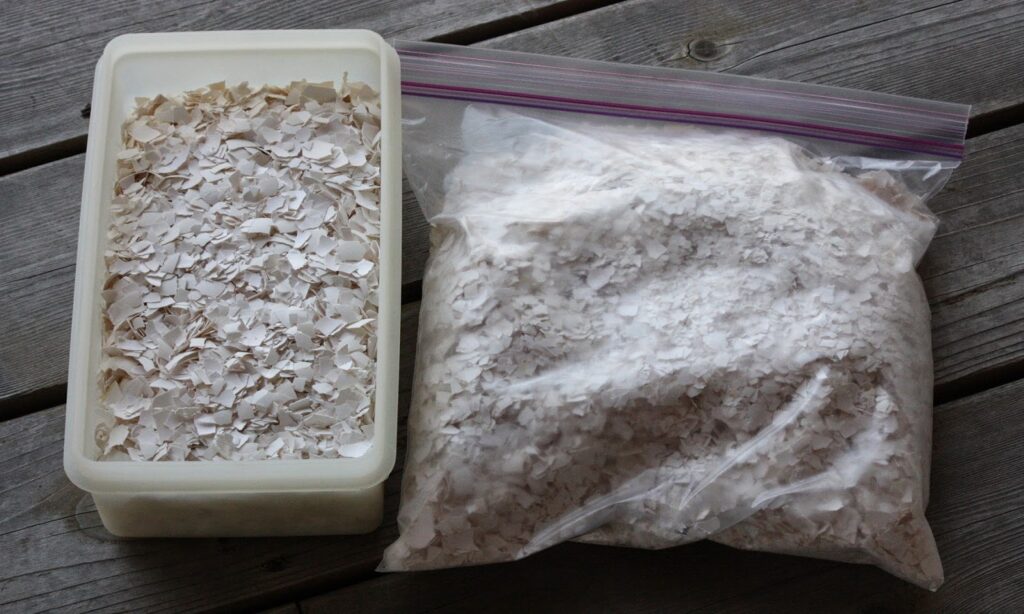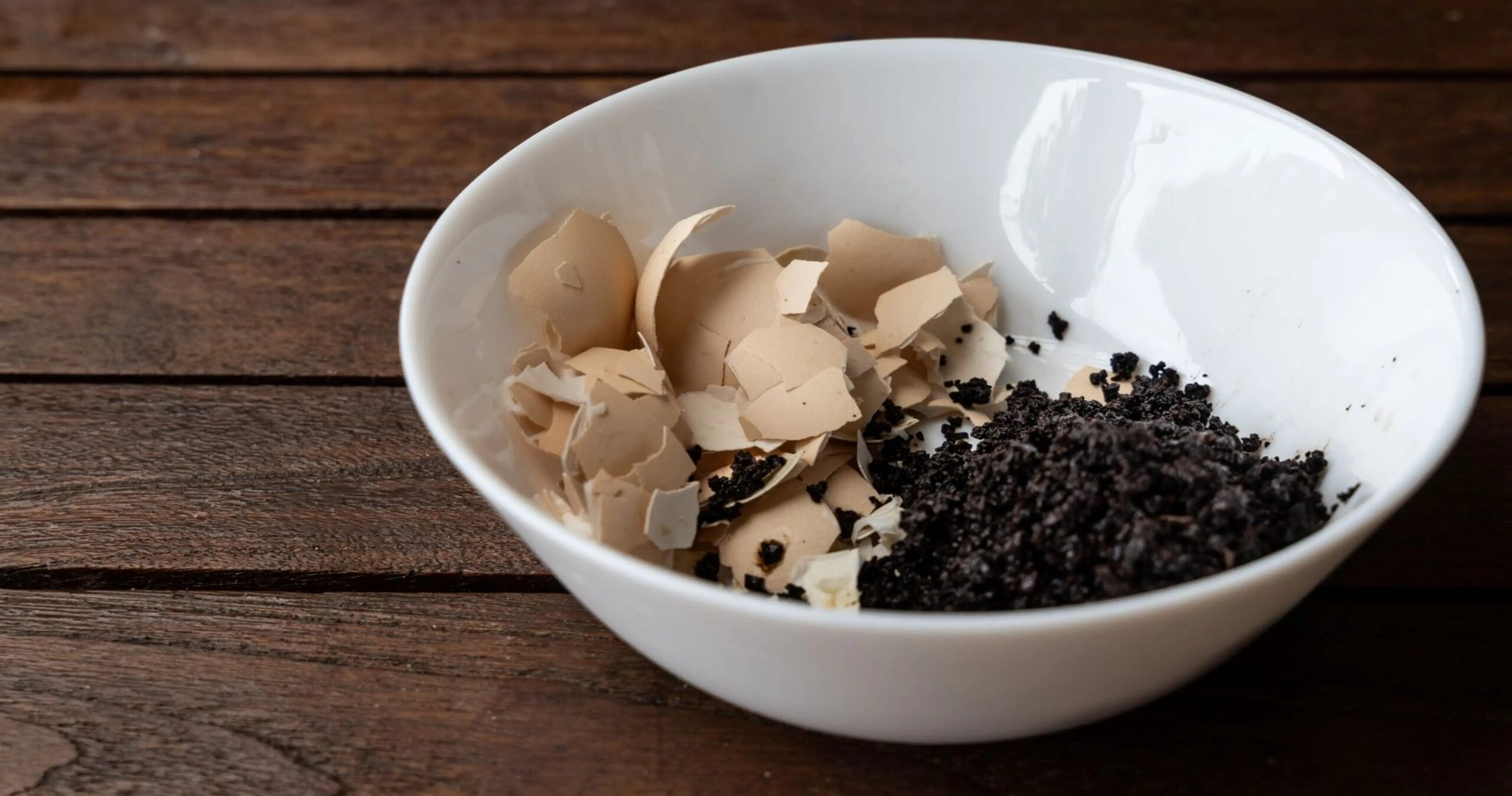One of the best things you can do to get ready for a great gardening season is to start saving and storing all of your used coffee grounds and eggshells in the fall, winter, and early spring.
But it can be hard to get to and take care of your compost pile in the winter when you have a lot of kitchen scraps. However, you can save your coffee grounds and eggshells with a few simple, safe, and easy steps for when you need them most, in the spring when you are planting your garden.
Why saving eggshells and coffee grounds is so important?
Coffee grounds have small amounts of nitrogen and other minerals and nutrients that plants need. In addition, they help attract worms and improve the soil’s structure and ability to absorb water.
Egg shells, on the other hand, have small amounts of nutrients that are good for plants and the soil. When mixed into the soil, these nutrients are easily washed out and taken up by the plant’s roots. We put both of these things down in every planting hole in the spring for all of these reasons and more.
Every hole we dig on the farm, whether it’s to plant tomato, pepper, and other vegetable transplants or to plant our annual flowers, we put coffee grounds and eggshells. We also put both on top of many of our plants to give them more nutrients and keep pests away.
This is why we need and use a lot of both when we plant. And the only way to make sure we have enough is to save our eggshells and coffee grounds all year long. But it can be hard to keep them from getting moldy or stinky when you store them.
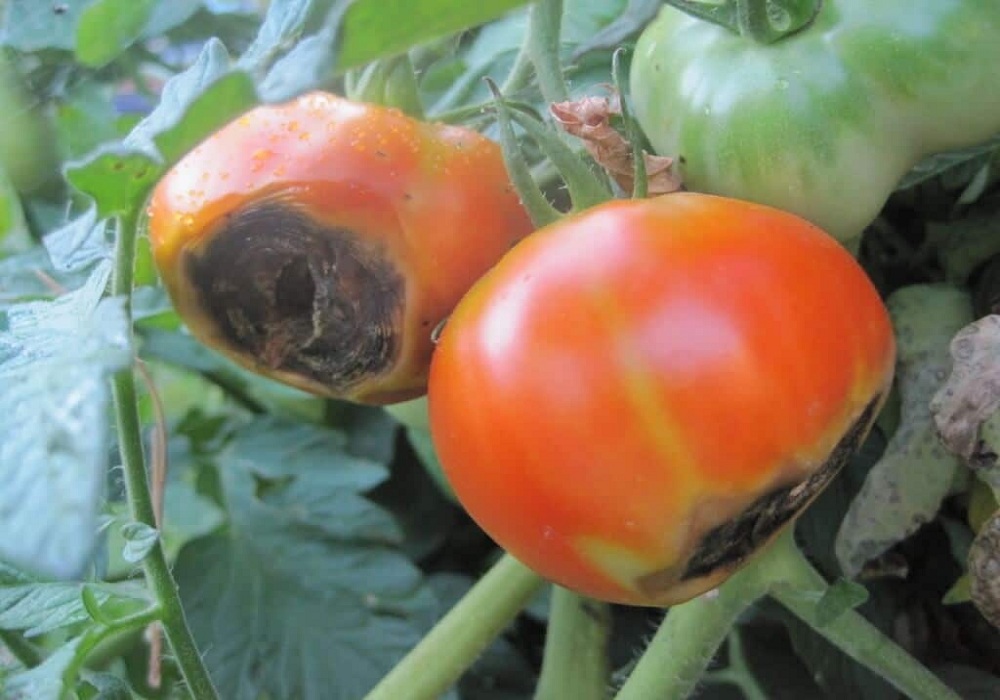
How to Store Egg Shells and Coffee?
The coffee grounds that come out of a coffee maker are usually very wet. If you store them at room temperature, especially if you don’t dry them first, they can often mold quickly. Even if you dry them, they can sometimes still absorb moisture and grow mold.
Often, eggshells have the same problem. Because eggshells are wet, sticky, and slimy on the inside, they can also mold quickly when they are at room temperature. Even worse, if it’s done with eggshells, it can also make a bad smell.
Because of these things, most people who try to save eggshells and coffee grounds throw them away as soon as they see mold. They also give up on the idea of saving any more in the future.
But here’s the good news: with just a little bit of simple preparation for each and a small amount of space in your freezer, you can store them safely and easily for months. All without worrying about them getting moldy or stinky.
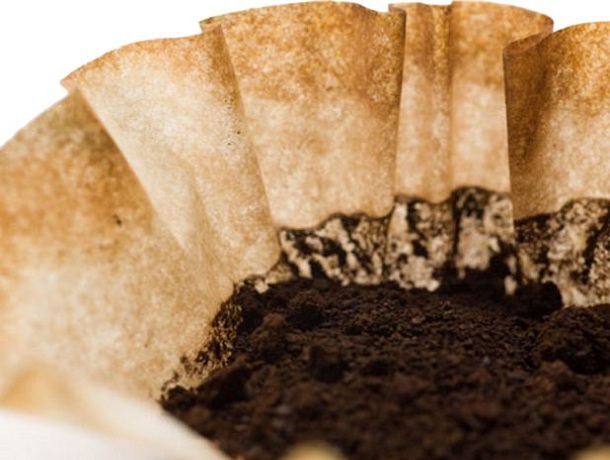
How to Store Egg Shells & Coffee Grounds?
Actually, the freezer is the best place to store both grounds and shells. If the materials are kept frozen, there is no chance that they will grow mold or smell bad. Even better, you can take them out when you need them and keep the rest in a deep freezer.
And if you’re worried about taking up too much space (especially with the eggshells), there’s a quick and easy way to fix that as well, as you’ll see below. With that in mind, here is a quick look at how to store each one!
Storing Coffee Grounds In The Freezer
The easiest thing to do is to store coffee grounds for a long time. If you’re going to freeze them, there’s no reason or need to dry them out first. The conditions for mold growth will be eliminated.
We use a plastic freezer bag that can be opened and closed quickly and can be used over and over again. When the coffee is done brewing in the morning, we just take the bag out of the freezer and scrape the coffee grounds into it.
Even when frozen, the grounds can be easily crushed down. It makes it easy to keep the bag flat when it’s full, which saves a lot of room in the freezer.
It’s important to scrape the coffee grounds off the filter and not save both the grounds and the filter. Not only does it save space, but the filter will freeze to the grounds and be hard to remove later. Most coffee filters can be put in the compost. So, if you still have a compost pile going in the winter, throw in the coffee filter and any small bits of coffee grounds that are still stuck to it.
About 75 to 100 coffee filters’ worth of grounds can usually fit into a one-gallon freezer bag. Putting away a few bags over the winter and early spring gives us a lot of ready-to-go soil when it’s time to plant.
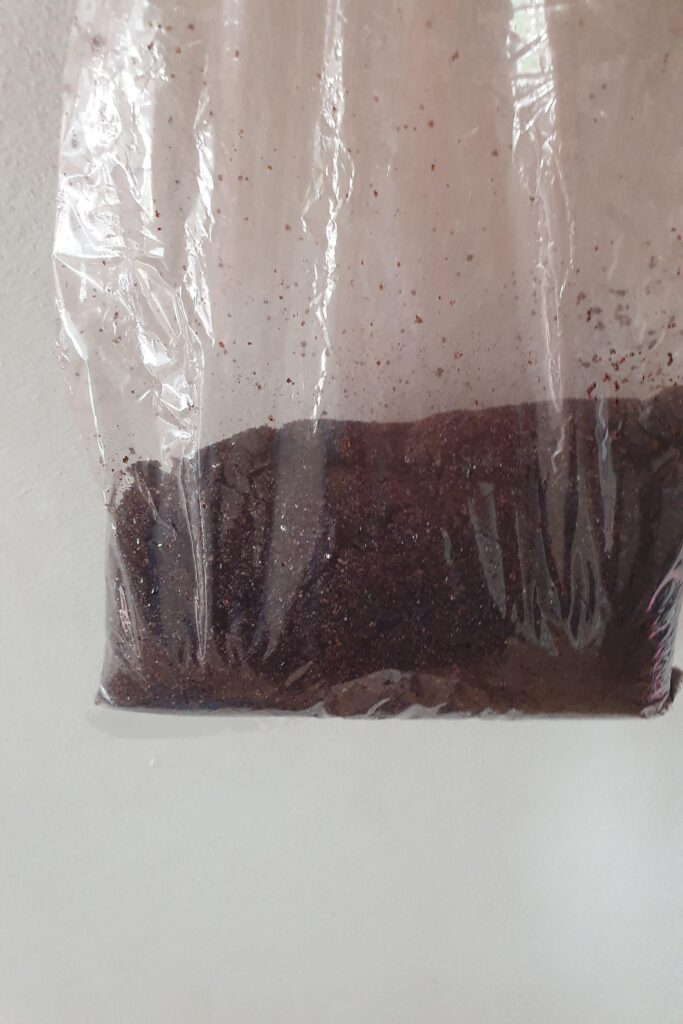
Storing Egg Shells In The Freezer
With eggshells, the process is still easy, but you’ll need to take a couple more steps to get the most out of your savings. Even though you could just break up fresh eggshells and put them in a resealable plastic freezer bag, this can take up a lot of space.
You can save a lot of space if you first grind the eggshells into something that is almost as fine as powder. A small hand-held coffee grinder makes it easy and quick to do. Just put the shells in and crush them.
Another huge benefit of making a powder out of your shells is that you can use it as a glue. It can take a long time for eggshells to break up into bigger pieces. But eggshell powder is easier for the soil to take up. This means that food and power plants get what they need faster.
We save about a week’s worth of eggshells at a time and then dry them in the oven on an old cookie sheet. Before grinding, we set the oven to 200°F for about 20 to 30 minutes. This makes the shells dry out and makes it quick, easy, and clean to grind them.
Final Thoughts…
As a final note, you should always clean your coffee grinder with soap and warm water to keep bacteria from growing on the blades. Once you’ve ground up the eggshells, you can put the powder in the freezer just like you do with coffee grounds, and you’ll be ready to plant next spring.
